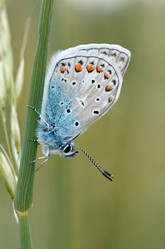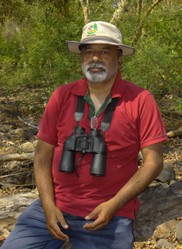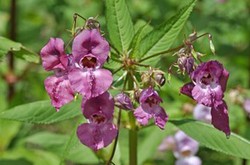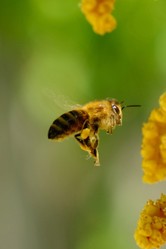Her work is a celebration of the role of large herbivores in the creation of the European landscape.She undertakes a critical analysis of the theory that the European landscape evolved as a massive woodland of densely packed trees, claiming instead that large herbivores played a major role in its creation. She calls it the animal disturbance theory and argues that the European landscape was less densely tree-covered than has been thought. She bases her theory on the fact that oak, which was prevalent in the early European landscape requires much light to flourish and that its seedlings thrive best when sheltered by a patch of scrub, far cry from the dense, dark forest that has been theorised. Her case is credible and convincing. Evidence is not drawn only from Kneppe but from across the British Isles, a breadth that gives her writing more weight. Moreover, she draws on experts, some of whom she knows personally, to support her case.
Visits to conservation projects in the Netherlands, Norway and elsewhere on the European continent provide an extra dimension of interest in the book, and she introduces us not only to their fauna, e.g. European bison, but to the interesting and inspiring characters who manage the projects.
Some of the large herbivores that she wanted to restore proved difficult to settle. The aurochs, the ancestral bull, is now extinct, and bison were not available, so she and Charlie had to use Old English longhorn cattle, which settled well. Also rejected were Heck cattle, a breed deriving from Nazi attempts to breed back the aurochs, for these cattle were considered too aggressive for an estate where local people go walking. Also difficult were the pigs. Wild boar could not be introduced as the estate was popular with walkers, so ginger Tamworths were introduced instead.These pigs, whose snouts are similar to those of a boar, did a great job in clearing land where there were weeds. Wild roe deer were also brought in as the estate began to turn itself into a much more wooded area.
The Exmoor ponies proved an attractive introduction.These hardy steeds have dwelt on Exmoor in the south west of England since the end of the Ice Age and bear a similarity to the horses in the cave paintings of France. The reason for having such variety in a small area is to have herbivore suites, range of animals with complementary grazing patterns. This proved successful.
A joyful element in the book is the reintroduction of beavers to Kneppe. These European beavers were brought from Scandinavia as part of a general reintroduction for the sake of water management, which in a time of climate change is causing problems in Britain. The book does a detailed study of the issues of water management and flooding and is very informative.








 Pilgrimage. A review16 days ago
Pilgrimage. A review16 days ago
 Leo the Fourteenthon 05/09/2025
Leo the Fourteenthon 05/09/2025
 The Melsonby Hoardon 03/25/2025
The Melsonby Hoardon 03/25/2025




Comments
Allotment sites attract birds, such as blue tits, which eat insects.. Frogs, which are drawn to sites with water, eat slugs.
Thank you for your comment below in answer to my previous observation and question.
Allotment sites attracting desirable and problematic fauna intrigues me.
Is there a similar situation with such fauna dispersing desirable and problematic flora?
Yes, but while allotment sites attract desirabĺe fauna, some problematic species are also attracted.
Thank you for your comment below in answer to my previous observation and question.
Wood pigeons around allotment sites may not be among the wildlife that most matters to allottees.
Allotment sites perhaps niche such beneficial insects as butterflies. What would be beneficial animals?
Wood pigeons in particular feed on vegetable crops. They are a significant consumer of vegetable resources. They hang around allotment sites.
Thank you for your comment below in answer to my previous observation and question.
Competition from pigeons and wood pigeons concerns me. Do pigeons, turtle doves and wood pigeons eat the same foods and frequent the same woody plants?
Loss of habitatvand competition from pigeons and wood pigeons.
Thank you for your comment below, on Apr 19, 2019, in answer to my previous observation and question.
Your answer advises us that "The turtle dove is now very rare in Britain."
What caused the rare occurrence?
BSG,selecting animals was a major issue. Bison were not available and anyway were not to my knowledge found in Britain. The wild cattle of the Chillingham herd are descended from the ancient British wild cattle that roamed the wildwood,but they are dangerous to handle.So they were not considered.
Derdriu, I replied to your post seven days ago, but my reply is not on screen.It must be some mistake on my part! Yes, Kneppe was a royal property that was passed on.
The dawn chorus of birds was a well-known phenomenon, though wildlife decline has weakened it. The turtle dove is now very rare in Britain, and it is not present in my area, the North West of England.